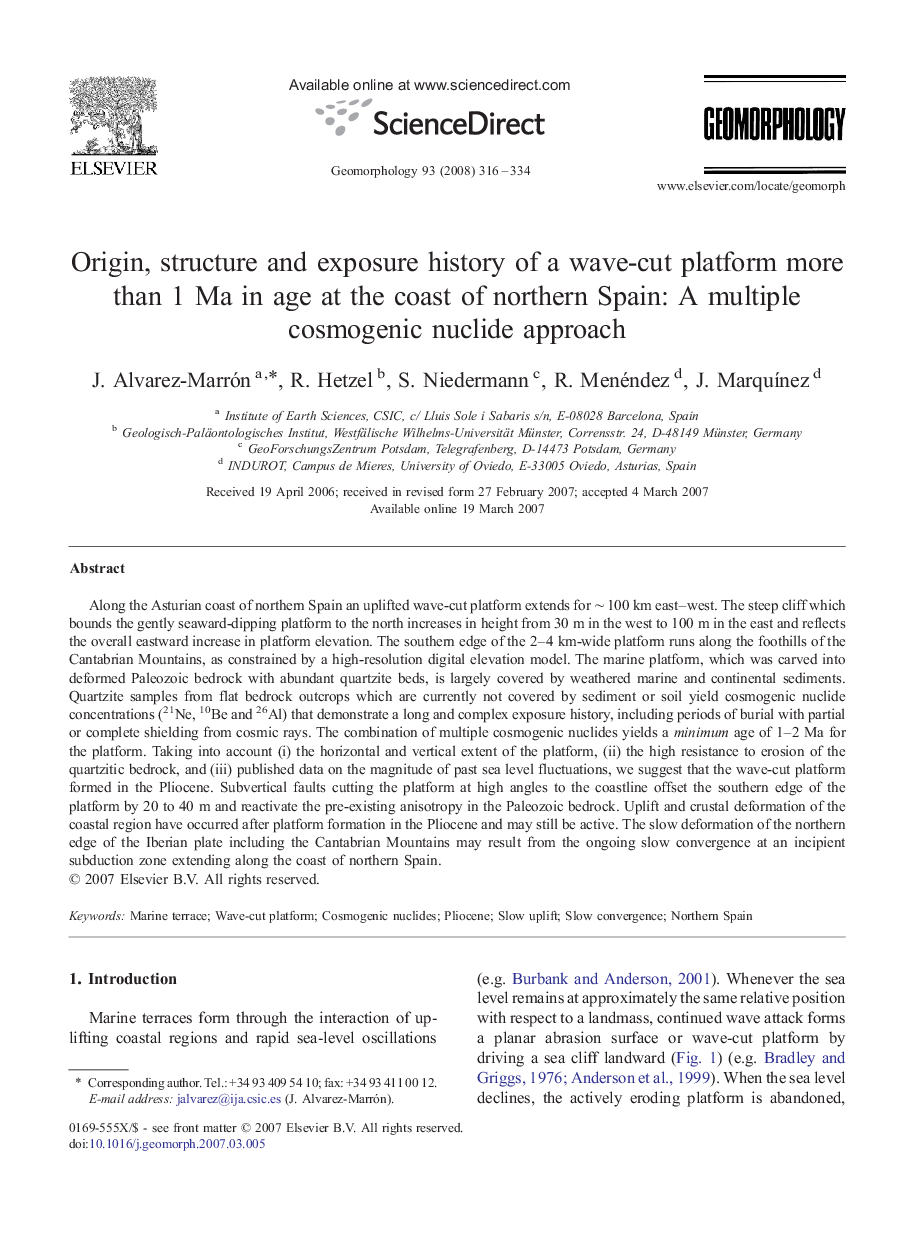| کد مقاله | کد نشریه | سال انتشار | مقاله انگلیسی | نسخه تمام متن |
|---|---|---|---|---|
| 4686898 | 1635566 | 2008 | 19 صفحه PDF | دانلود رایگان |

Along the Asturian coast of northern Spain an uplifted wave-cut platform extends for ∼ 100 km east–west. The steep cliff which bounds the gently seaward-dipping platform to the north increases in height from 30 m in the west to 100 m in the east and reflects the overall eastward increase in platform elevation. The southern edge of the 2–4 km-wide platform runs along the foothills of the Cantabrian Mountains, as constrained by a high-resolution digital elevation model. The marine platform, which was carved into deformed Paleozoic bedrock with abundant quartzite beds, is largely covered by weathered marine and continental sediments. Quartzite samples from flat bedrock outcrops which are currently not covered by sediment or soil yield cosmogenic nuclide concentrations (21Ne, 10Be and 26Al) that demonstrate a long and complex exposure history, including periods of burial with partial or complete shielding from cosmic rays. The combination of multiple cosmogenic nuclides yields a minimum age of 1–2 Ma for the platform. Taking into account (i) the horizontal and vertical extent of the platform, (ii) the high resistance to erosion of the quartzitic bedrock, and (iii) published data on the magnitude of past sea level fluctuations, we suggest that the wave-cut platform formed in the Pliocene. Subvertical faults cutting the platform at high angles to the coastline offset the southern edge of the platform by 20 to 40 m and reactivate the pre-existing anisotropy in the Paleozoic bedrock. Uplift and crustal deformation of the coastal region have occurred after platform formation in the Pliocene and may still be active. The slow deformation of the northern edge of the Iberian plate including the Cantabrian Mountains may result from the ongoing slow convergence at an incipient subduction zone extending along the coast of northern Spain.
Journal: Geomorphology - Volume 93, Issues 3–4, 15 January 2008, Pages 316–334